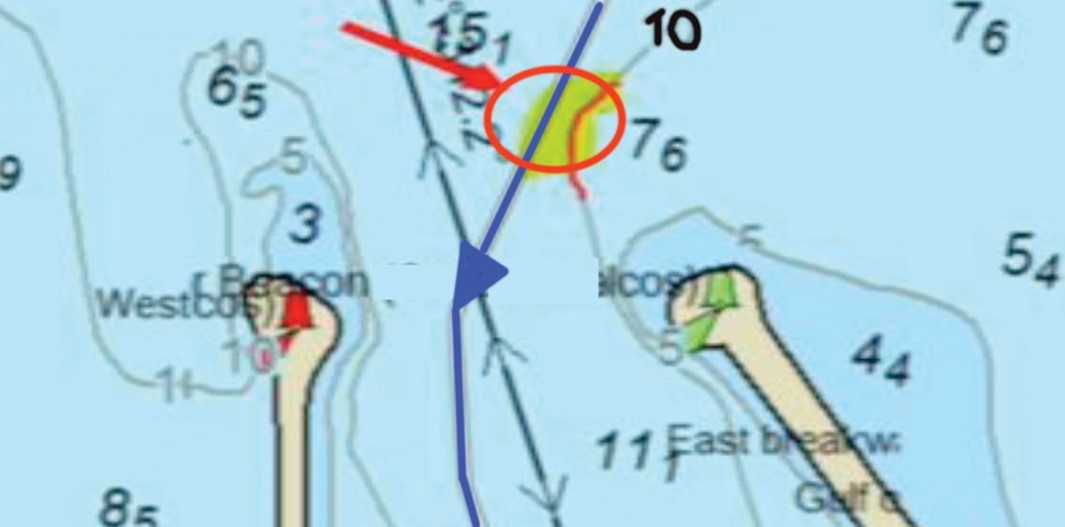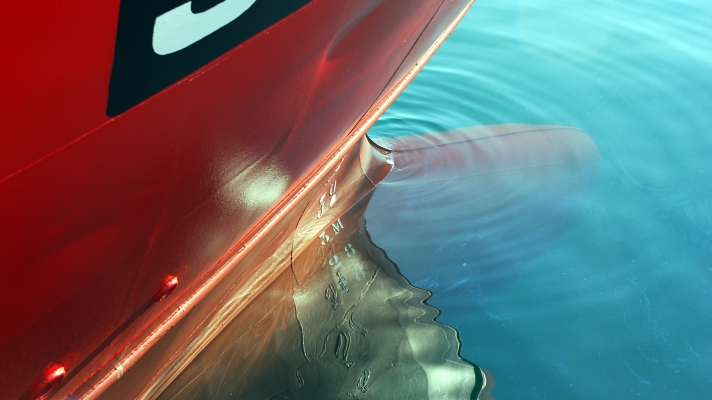A different pilot boarding area than planned and not sufficiently questioning the pilot’s actions resulted in a tanker grounding. The incident is described in The Nautical Institute’s latest Mars Report, in which the institute stresses the importance of when and how to challenge a pilot.
The Nautical Institute gathers reports of maritime accidents and near-misses. It then publishes these so-called Mars Reports (anonymously) to prevent other accidents from happening. A summary of this incident:
In good weather and in darkness, a tanker took on two pilots for port entry in the early morning hours (03:00). According to reports, there was a perfunctory master/pilot exchange after which one of the pilots took the con. The inbound passage plan had been prepared by the crew and the ECDIS charts marked with “No Go” areas and parallel indexing.
However, the actual pilot boarding area differed from the planned one hence, after pilot boarding, the vessel was not on the planned route – they were significantly to the east of the leading lights that indicated the safe entry course.
Also read: A challenge too little, too late
Soon after the master pilot exchange, the master noticed that the vessel was approaching the 10-metre shallow contour and reminded the pilot that vessel’s maximum static draft was 10.6 metres. The pilot replied, ‘Yes, captain’ and soon after ordered ‘port 10’ followed quickly by ‘hard to port’. The helmsman confirmed both orders. Then the orders ‘midship’, ‘steady’, ‘port 10’ and ‘port 20’ were given in rapid succession by the pilot and were confirmed accordingly by the helmsman.

Almost immediately a strong vibration was felt throughout the ship and the vessel started swinging to starboard. The pilot ordered ‘Stop the engine’. The bridge team now knew they had touched bottom and the depth sounder was turned on. It showed 1 metre.
Tanks were sounded and water ingress was discovered in the port side ballast tanks.
Advice from The Nautical Institute
Once again, we have the classic question of when and how to challenge a pilot. In this case, the master warned the pilot, but it appears this was already too late. Being too far to the east of the port entry leading lights from the beginning was a red flag that should have been resolved before the vessel came close to the breakwaters.
Also read: Discuss concerns and challenge decisions
Mars Reports
This accident was covered in the Mars Reports, originally published as Mars 202223, that are part of Report Number 356. A selection of this Report will also be published in SWZ|Maritime’s July-August 2022 issue. The Nautical Institute compiles these reports to help prevent maritime accidents. That is why they are also published on SWZ|Maritime’s website.
More reports are needed to keep the scheme interesting and informative. All reports are read only by the Mars coordinator and are treated in the strictest confidence. To submit a report, please use the Mars report form.
Also read: Dare to relieve the pilot when ship manoeuvres go wrong








